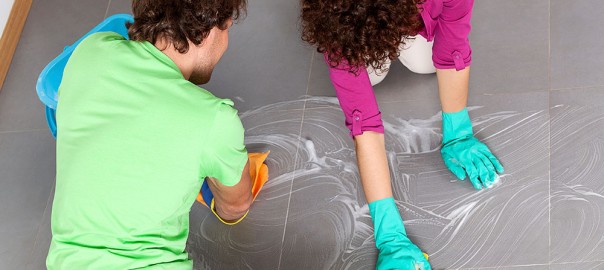“A clean home is a happy home.” It is also a germ-free home, which helps keeps its members free from sickness. A clean home doesn’t just happen though, you have to remember to keep up with cleaning your entire home to boost up the defense again those germs that are invested in sneaking in and setting up camp. Cleaning methods are important and we have a list to help ensure your home is clean and sterile.
1. Wash your hands before and after cleaning
In order to prevent germs from spreading and maintaining a clean home, it’s important to do what your mother always told you and to wash your hands. This is after using the bathroom, handling raw foods and before and after cleaning. Remember to use the proper method and use warm/hot water and anti-bacterial soap and lathering for 30 seconds before rinsing.
2. Wear gloves when using chemicals and cleaning
Gloves are an extremely good idea to use when cleaning. This not only prevents germs from spreading by keeping the germs contained to one area, but also protects your hands from contact with germs and harmful chemicals as well.
3. Use Disinfectant Spray
For areas that aren’t as easy to clean with a simple wipe down, use disinfectant spray to kill airborne germs. You can use these on couches, chairs and areas that you can’t stripe or wipe away with a clean rag. It’s also good to kill any germs floating about in the air.
4. Use a vinegar diluted mix or anti-bacterial spray
Wiping down areas that are in high trafficked areas that members of the household touch is a major first step in order to stop germs in their tracks. Using anti-bacterial spray found in stores or making your own vinegar diluted mix is a good solution to kill those unwanted germs from those surfaces.
5. Empty, clean and disinfect garbage cans
This one is quite simple and easy, however usually people just empty the garbage yet forget to wipe down and disinfect. Don’t skip this step! The garbage is a major breeding ground for airborne germs!
6. Wash clothes, towels and bedding in hot water
Remember to do this weekly or every few days. Don’t let it accumulate, your only asking for the pile of dirty clothes to manifest into an incubation center for germs. Get those clothes in the wash at the highest temperature and kill them off in the dryer as well.
7. Open the windows
Freshness and new air is important for filtering out the filthy germs that are circulating in the air of your home. Not only that but you’ll notice a new, fresh smell to your home eliminating the dank smell that was once accumulating indoors.
8. Dust and Vacuum
Dusting is vital and often overlooked in many homes, as germs like to attach to these little dust bunnies. Dust also decreases your quality of air and can cause discomfort when breathing it in. Remember to dust first and then vacuum as it might make its way down to the floor. Finish off by emptying and cleaning out your vacuum.
9. Boil and clean your toothbrush
One thing people forget is that your toothbrush is out in the open and that’s ok, especially to dry off and decrease the chance for growth of bacteria. However, there are other germs floating about, especially in the bathroom. Remember to boil your toothbrush periodically to remove any bacteria clinging on to the bristles.
10. Wipe down floors with disinfectant solution
The floors tend to be riddled with germs and bacteria brought in by our shoes and feet. Create a solution or buy one and scrub those floors to remove those germs. Try to make it a habit to leave your shoes at the door to minimize the spread of outside contaminants.
Keeping these cleaning methods in mind, now you can go out and buy those supplies and start scrubbing your house from head to toe to remove any germs you have that may have snuck in!



